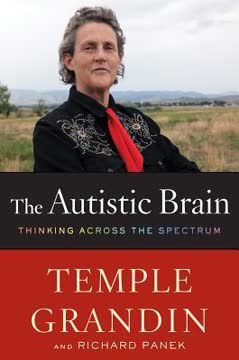Key Takeaways
1. Visual thinking is a distinct and valuable cognitive style
"Visual thinking is not about how we see but about how the brain processes information; how we think and we perceive."
Two types of visual thinkers. Object visualizers think in photorealistic images and excel in fields like art, design, and mechanical engineering. Spatial visualizers think in patterns and abstractions, thriving in areas such as mathematics and physics. Both types of visual thinking are essential for innovation and problem-solving.
Characteristics of visual thinking:
- Associational thinking: Making connections between seemingly unrelated concepts
- Attention to detail: Noticing small discrepancies or potential issues
- Ability to simulate scenarios: Visualizing potential outcomes or solutions
Visual thinking is not limited to humans; many animals also process information visually, which influences their behavior and survival strategies.
2. Education systems often fail to recognize and nurture visual thinkers
"Removing hands-on learning from schools is the worst thing to happen to education in recent memory, in my opinion."
Standardized testing bias. Current educational systems heavily favor verbal and mathematical skills, often overlooking the strengths of visual thinkers. This approach can lead to talented individuals being labeled as underperformers or having learning disabilities when their cognitive style simply differs from the norm.
Consequences of neglecting visual thinkers:
- Loss of potential innovators and problem-solvers
- Reduced diversity in thinking styles within various fields
- Decreased motivation and self-esteem among visual thinkers
To address this issue, schools should incorporate more hands-on learning experiences, visual aids, and project-based assessments that allow visual thinkers to demonstrate their unique abilities and contributions.
3. Visual thinkers are essential for innovation and problem-solving
"We need future generations who can build and repair infrastructure, overhaul energy and agriculture, create tools to combat climate change and pandemics, develop robotics and AI."
Real-world applications. Visual thinkers have been responsible for numerous groundbreaking inventions and solutions throughout history. Their ability to see problems from different angles and visualize complex systems makes them invaluable in fields such as engineering, design, and technology.
Examples of visual thinkers' contributions:
- Development of innovative technologies (e.g., computers, smartphones)
- Architectural and infrastructure design
- Medical breakthroughs and scientific discoveries
Recognizing and fostering visual thinking skills is crucial for addressing complex global challenges and driving progress in various industries.
4. Complementary minds: The power of diverse thinking styles
"The first step in successful collaboration between different kinds of thinkers is learning that different kinds of thinkers exist."
Synergistic collaboration. When visual thinkers and verbal thinkers work together, they can achieve remarkable results by combining their unique strengths. This complementary approach leads to more comprehensive problem-solving and innovative solutions.
Benefits of diverse thinking styles in teams:
- Enhanced creativity and innovation
- Improved problem-solving capabilities
- More comprehensive analysis and decision-making
Organizations should actively seek to create diverse teams that include both visual and verbal thinkers to maximize their potential for success and breakthrough ideas.
5. The connection between neurodiversity, visual thinking, and genius
"Genius requires not only intelligence and creativity but divergent thinking as well."
Neurodiversity and creativity. Many individuals considered geniuses throughout history have displayed traits associated with neurodiversity, such as autism or ADHD. These traits often correlate with strong visual thinking abilities and unconventional problem-solving approaches.
Characteristics of neurodiverse geniuses:
- Intense focus on specific interests
- Ability to see patterns and connections others might miss
- Unconventional thinking and approach to problems
Embracing neurodiversity and recognizing the value of different cognitive styles can lead to groundbreaking discoveries and innovations across various fields.
6. Visual thinking's role in risk assessment and disaster prevention
"Visual thinking does not enable me to predict the future. But it does allow me to home in on design flaws and system failures that, unaddressed, can lead to disaster."
Anticipating potential issues. Visual thinkers excel at identifying potential risks and visualizing possible failure scenarios. This ability is crucial in fields such as engineering, aviation, and disaster prevention.
Applications of visual thinking in risk assessment:
- Identifying design flaws in complex systems
- Simulating potential disaster scenarios
- Developing innovative safety measures
Incorporating visual thinkers into risk assessment and safety planning processes can significantly enhance an organization's ability to prevent and mitigate potential disasters.
7. Understanding animal cognition through the lens of visual thinking
"Animals live in a sensory-based world and think in pictures, smells, sounds, and touch sensations."
Similarities in cognition. Many animals process information visually, similar to human visual thinkers. Understanding this can provide insights into animal behavior, learning, and problem-solving abilities.
Implications of animal visual thinking:
- Enhanced understanding of animal cognition and behavior
- Improved animal welfare practices
- Potential applications in human-animal interactions and training
Studying animal cognition through the lens of visual thinking can lead to more effective and humane approaches to animal care, training, and conservation efforts.
Last updated:
FAQ
What's Visual Thinking: The Hidden Gifts of People Who Think in Pictures, Patterns, and Abstractions about?
- Exploration of Thinking Styles: The book delves into how individuals process information, focusing on those who think in images and patterns rather than words.
- Neurodiversity and Innovation: It discusses the intersection of neurodiversity and genius, highlighting contributions of visual thinkers to innovation and problem-solving.
- Personal Journey: Temple Grandin shares her experiences as an autistic individual, illustrating how visual thinking has shaped her career in animal science and design.
Why should I read Visual Thinking by Temple Grandin?
- Understanding Different Minds: Gain insights into diverse cognitive styles, enhancing empathy and understanding in educational and professional settings.
- Valuable for Educators and Employers: Offers practical advice on identifying and nurturing visual thinkers, ensuring their skills are recognized and utilized.
- Inspiration for Neurodiverse Individuals: Grandin’s journey serves as an inspiration, showing that different thinking styles can lead to success and innovation.
What are the key takeaways of Visual Thinking?
- Types of Visual Thinkers: Grandin identifies object visualizers and spatial visualizers, each excelling in different fields.
- Impact of Education: Critiques standardized education systems that often overlook visual thinkers, advocating for hands-on learning.
- Collaboration is Key: Emphasizes the importance of collaboration between verbal and visual thinkers for innovative solutions.
What are the best quotes from Visual Thinking and what do they mean?
- “We come into the world without words.”: Highlights the innate ability to perceive the world through senses before language develops.
- “We’ve screened out visual thinkers.”: Critiques the educational system's failure to nurture visual thinkers, leading to a loss of potential talent.
- “Two geeks are better than one.”: Underscores the value of collaboration between different types of thinkers for enhanced creativity and problem-solving.
How does Temple Grandin define visual thinking in her book?
- Cognitive Process: Visual thinking is defined as processing information primarily through images and visual patterns rather than words.
- Problem-Solving Importance: Crucial for fields like engineering and design, where understanding spatial relationships is essential.
- Spectrum of Thinking: Visual thinking exists on a spectrum, with most people using a combination of visual and verbal thinking.
How does Visual Thinking address education for visual thinkers?
- Critique of Standardized Testing: Critiques reliance on standardized testing, which disadvantages visual thinkers who excel in hands-on learning.
- Advocacy for Hands-On Learning: Advocates for reinstating hands-on classes like shop and art to help visual thinkers develop their talents.
- Individualized Education Plans (IEPs): Emphasizes creating tailored educational experiences that cater to visual thinkers' strengths.
What role does neurodiversity play in Visual Thinking?
- Celebration of Differences: Emphasizes recognizing neurodiversity as a strength, contributing to creativity and innovation.
- Advocacy for Inclusion: Advocates for inclusive practices in education and the workplace to allow neurodiverse individuals to thrive.
- Connection to Genius: Explores the link between neurodiversity and genius, suggesting many great innovators exhibited traits associated with autism.
How can employers benefit from understanding visual thinking according to Temple Grandin?
- Identifying Talent: Learn to recognize visual thinkers and leverage their unique skills for problem-solving and innovation.
- Creating Inclusive Work Environments: Provides strategies for accommodating different thinking styles, improving collaboration and productivity.
- Valuing Diverse Perspectives: Argues that diverse teams, including verbal and visual thinkers, are more effective at tackling complex problems.
What solutions does Visual Thinking propose for the skills gap in the workforce?
- Reinstating Vocational Training: Advocates for vocational training and hands-on learning opportunities to cultivate visual thinkers' skills.
- Promoting Apprenticeships: Emphasizes the importance of apprenticeship programs for real-world experience and training.
- Encouraging Early Exposure: Suggests exposing children to hands-on activities and careers to help them discover their strengths.
How does Grandin’s personal experience shape Visual Thinking?
- Autistic Perspective: Shares her journey as an autistic individual, illustrating how visual thinking has been both a challenge and a strength.
- Professional Insights: Provides real-world examples from her career in livestock industry and design, showing visual thinking's impact.
- Empowerment for Others: Aims to empower others on the autism spectrum to recognize and embrace their unique thinking styles.
What examples does Grandin provide to illustrate visual thinking in action?
- NASA and Engineering: Highlights how visual thinkers can identify potential risks in engineering designs, using her experiences with NASA.
- Animal Handling: Describes how visualizing animal behavior led to improved welfare practices in her work.
- Everyday Risks: Discusses scenarios where visual thinking helps identify risks, demonstrating practical applications in daily life.
What is the significance of visual thinking in the context of innovation and creativity?
- Fostering Innovation: Visual thinking allows individuals to see connections and possibilities others may miss, leading to groundbreaking ideas.
- Historical Examples: References figures like Einstein and Michelangelo, suggesting their visual thinking contributed to their achievements.
- Encouraging Diverse Perspectives: Emphasizes the importance of diverse perspectives in creative fields, enhancing collaboration and innovation.
Review Summary
Visual Thinking receives mixed reviews. Some praise Grandin's insights on different thinking styles and the need for educational reform. Others criticize her generalizations, lack of research, and repetitive content. The book's strengths lie in discussing visual thinking and its potential benefits, while weaknesses include bias towards visual thinkers and overreliance on anecdotes. Many readers appreciate Grandin's perspective but find the execution lacking. The book sparks discussions about neurodiversity and education but falls short in providing comprehensive, evidence-based arguments.
Similar Books








Download PDF
Download EPUB
.epub digital book format is ideal for reading ebooks on phones, tablets, and e-readers.










